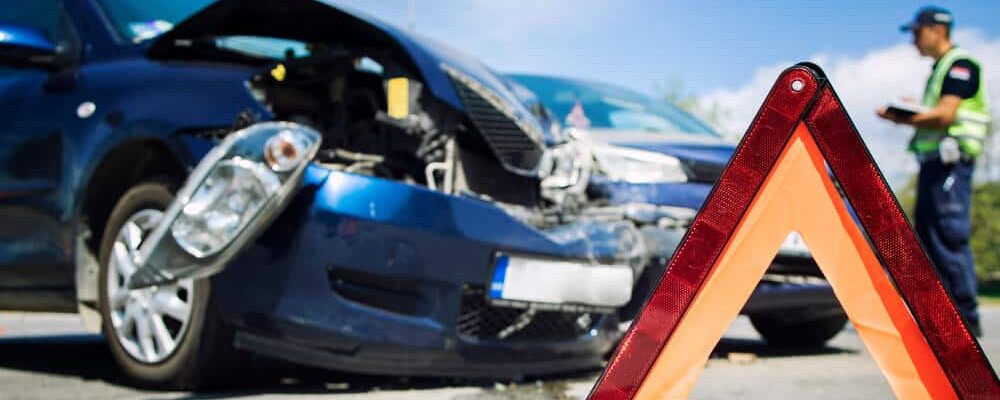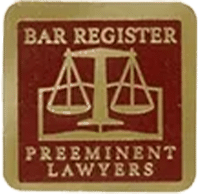
According to recent data from the Oklahoma Highway Safety Office (OHSO), most Oklahoma car accidents happen on Fridays. In just one year, over 10,000 auto accidents occurred on Fridays, representing nearly 20 percent of all crashes that year. April was the most dangerous month for collisions. Oklahoma drivers were in more than 6,000 traffic incidents throughout the month of April, accounting for nearly 10 percent of all crashes that year.

Hurt in A Car Accident?
Contact us today for your free & confidential case review. Our team will help you get the compensation that you deserve.
What Time of Day Do Car Accidents Occur Most Often in Oklahoma?
In Oklahoma, car wrecks happen most often during the late afternoon and early evening hours. Specifically, the time from 3:00 p.m. to 6:00 p.m. sees the highest number of accidents, with a peak at 5:00 p.m. This period typically aligns with the end of the school day and the typical workday, leading to increased traffic as people head home or run errands. The morning hours also see a significant number of collisions, particularly from 7:00 a.m. to 9:00 a.m. – the standard time for morning commutes to work or school.
What Are the Most Dangerous Holidays for Driving?
Certain holidays come with a higher risk of getting into a car accident in Oklahoma. For instance, OHSO reported that the highest total number of holiday crashes occurred on Thanksgiving, with 586 accidents and 6 fatalities. Independence Day was next on the list, with 541 crashes and 11 deaths. Memorial Day had the third-most, with 530 crashes and 4 fatalities.
A different picture emerges when we adjust the data based on how long each holiday period lasts. St. Patrick’s Day leads the pack with 8.73 crashes per hour. Independence Day and Memorial Day remain high-risk holidays, too, with crash rates of 6.94 and 6.79 per hour, respectively.
Why Do More Accidents Happen During Rush Hour?
More accidents tend to happen during rush hour for several reasons. First, the roads are much busier. With so many people heading to or from work at the same time, the chances of a collision naturally increase. More stop-and-go traffic can easily lead to rear-end collisions if drivers aren’t paying close attention.
Drivers are also more likely to be tired or distracted early in the morning or after a long day at work. For instance, they might be thinking about upcoming meetings or their evening plans instead of focusing on the road. They might also be in a rush to get to the office or return home, which can lead to speeding or aggressive driving. All of these factors contribute to the higher likelihood of accidents during busy rush hour times.
Why Do Many Accidents Happen at Sunrise and Sunset?
Many accidents occur at sunrise and sunset because these times can seriously challenge a driver’s vision. The sun’s position at these hours often puts it directly in drivers’ eyes, making it hard to see the road, traffic signals, and other cars. This blinding glare can lead to missed signals or unexpected braking. During sunrise and sunset, the light changes quickly, so drivers’ eyes must constantly adjust between light and dark, making it tough to spot potential hazards in time.
Drowsiness can also be a factor during these times of the day. At sunrise, people who are driving to work or school might not be fully alert yet. After a day’s work, exhaustion can set in at sunset, and attention can wane. Combining impaired visibility with drowsiness creates risky driving conditions, which is why accidents might be more common during these times.
When Are More Drunk Driving Accidents Likely to Occur?
Sadly, drunk driving accidents are a year-round threat, but data suggests they are especially likely during certain times of the day, days of the week, and months of the year:
- Times: The risk of DUI wrecks escalates dramatically in the late evening and early morning hours, peaking at 9 p.m. and remaining high until 3 a.m. This time frame likely coincides with when people are heading home from bars and clubs.
- Days: Alcohol-related crashes reportedly happen most often on Saturdays, followed by Sundays and Fridays. This suggests that weekends, when people are more likely to be out drinking and socializing, pose the greatest risk for drunk driving accidents.
- Months: The late spring, midsummer, and early fall months – particularly April, May, July, October, and November – show the highest numbers of alcohol-related crashes. These months often involve holiday celebrations, festivals, and outdoor activities where alcohol flows freely, leading to an increase in drunk driving.
What Can I Do to Protect Myself from Car Accidents During These Times?
Staying safe on the road requires attention and precaution, especially during high-risk times like rush hour, sunrise or sunset, and busy holidays. Here are some actions you can take to protect yourself and others while driving:
- Plan your travel to avoid the busiest periods when possible.
- Give yourself plenty of time to arrive at your destination to avoid rushing.
- Always wear your seatbelt.
- Obey all traffic signals and road signs.
- Use your turn signals for every turn or lane change.
- Check your mirrors frequently.
- Maintain a safe following distance from the car in front of you.
- Avoid distractions like using your phone or eating while driving.
- Slow down in bad weather conditions.
- Keep your windshield and mirrors clean for clear visibility.
- Use your headlights at dusk and dawn.
- Be extra cautious at intersections.
- Drive at reduced speeds in heavy traffic.
- Take alternate routes to avoid congestion.
- Schedule regular breaks to avoid drowsy driving on long trips.
- Use a designated driver if you plan to consume alcohol.
- Adjust your speed according to the flow of traffic.
- Stay in your lane and avoid unnecessary lane changes.
- Keep your car in good working order with regular maintenance checks.
- Stay alert and watch for pedestrians and cyclists, especially during holidays.
- Avoid aggressive driving behaviors such as tailgating or lane weaving.
Contact an Oklahoma Car Accident Lawyer
Have you been injured in a car accident in Oklahoma? Contact Edwards & Patterson Law for a free initial consultation to discuss your case. Our team is ready to provide the support and guidance you need to seek the compensation you deserve.
Visit Our Car Accident Law Offices
Last updated Wednesday, February 12th, 2025














